So, you’ve got a 2JZ engine and you’re itching for more power. Nitrous oxide might just be the ticket—but hold on a second. Before you dive in headfirst, it’s crucial to understand how to use nitrous oxide responsibly. Think of it like adding a turbo boost to your gaming controller; it’s thrilling but can backfire if you press the wrong button at the wrong time.
The 2JZ is a legendary engine known for its strength and tuning potential. But just because it’s tough doesn’t mean it’s invincible. Nitrous oxide can crank up horsepower and torque in a flash, but without proper care, it can also cause serious engine damage. Imagine nitrous as a powerful espresso shot for your engine—it wakes things up fast, but too much too quickly can leave you jittery and worse off than before.
Responsible use means understanding the balance between power and safety. It’s not about dumping the biggest nitrous shot you can find and hoping for the best. Instead, it’s about knowing your engine’s limits, tuning carefully, and pairing nitrous with the right supporting mods. This approach helps you squeeze out extra performance without waking the demons of detonation or lean conditions.
One thing I’ve learned from watching countless 2JZ builds is that patience pays off. Rushing into a high horsepower nitrous setup without proper tuning is like sprinting before you learn to walk—it’s a recipe for disaster. Start small, tune meticulously, and listen to what your engine is telling you. With nitrous, less can often be more.
Lastly, don’t forget: nitrous is just a tool. How you use it makes all the difference. Pair it with a solid tune, quality fuel, and good maintenance habits, and you’ll enjoy a thrilling power boost that feels smooth and controlled. Abuse it, and you risk turning your powerhouse into a costly paperweight. So buckle up, take it slow, and boost your 2JZ the smart way.
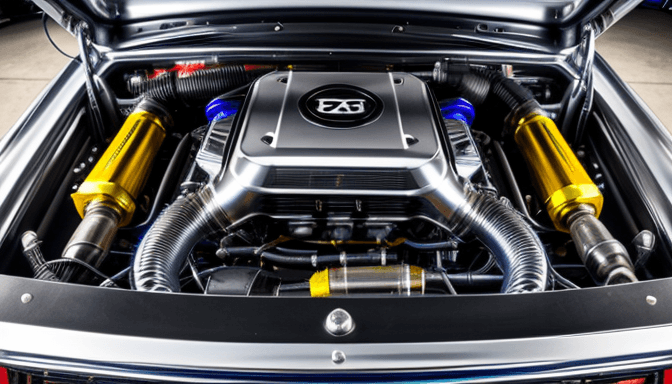
What Is Nitrous Oxide and How Does It Work on a 2JZ?
Imagine you’re trying to squeeze every last bit of power from your 2JZ engine. You’ve tweaked the turbo, upgraded the fuel system, but there’s still that hunger for more. That’s where nitrous oxide steps in—like a secret weapon in your performance arsenal. But what exactly is nitrous oxide, and how does it work on the legendary 2JZ engine? Let’s break it down in a way that actually makes sense.
Nitrous oxide, often called “nitrous” or “N2O,” isn’t just some magic potion. It’s a chemical compound made of two nitrogen atoms and one oxygen atom. When injected into the engine’s intake, it does something pretty clever: it releases extra oxygen when heated during combustion. More oxygen means you can burn more fuel, which means more power. Simple, right? But here’s the catch—this process needs to be carefully managed, especially with an engine like the 2JZ, known for its robustness but not invincibility.
Think of nitrous oxide as a turbocharger’s best friend that arrives instantly. While a turbo relies on exhaust gases to spool up and deliver boost, nitrous gives your engine an immediate oxygen boost, bypassing that annoying lag. The 2JZ, with its strong iron block and solid internals, can handle this oxygen flood if you tune it right. But if you’re careless, it’s like pouring gasoline on a fire—you risk knocking, detonation, or worse.
Here’s how it plays out inside the engine: when nitrous enters the combustion chamber, it breaks down at around 572°F, releasing oxygen. This extra oxygen lets your engine burn more fuel, cranking up horsepower and torque. But this also cools the intake charge, which helps reduce the risk of pre-detonation—a nice bonus. It’s like giving your engine a cold drink on a hot day while feeding it a power snack.
The key with the 2JZ is balance. Too little nitrous, and you’re wasting potential. Too much, and you’re flirting with disaster. This is why tuning and fuel delivery upgrades go hand-in-hand with nitrous systems. The goal? To keep the air-fuel mixture just right and the combustion smooth. When done right, nitrous oxide can be that thrilling push your 2JZ needs without turning it into a ticking time bomb.
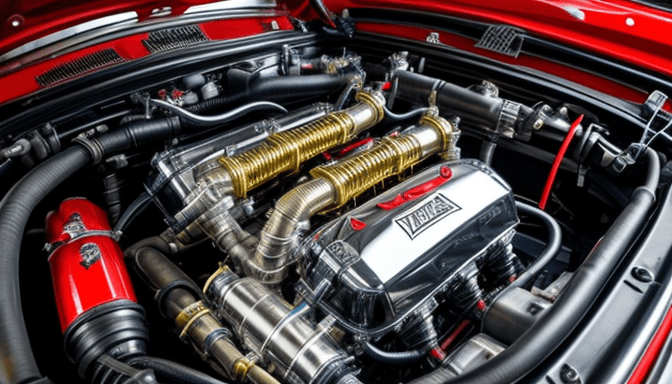
Wet vs Dry Nitrous Systems: Which Is Safer for Your Build?
When it comes to boosting your 2JZ engine with nitrous oxide, safety isn’t just a buzzword—it’s the foundation of every successful build. So, how do you choose between a wet or dry nitrous system? It’s a question that pops up a lot, and honestly, the answer depends on what you want out of your setup and how much risk you’re willing to handle.
Let’s start with the basics. A dry nitrous system sprays only nitrous oxide into the intake, relying on the engine’s fuel system to add the extra fuel needed for combustion. It’s a simpler setup, easier to install, and often cheaper. But here’s the catch: since the fuel delivery isn’t directly controlled by the nitrous system, it can lead to lean conditions if your fuel system can’t keep up. And lean equals danger—think detonation and engine damage.
On the flip side, a wet nitrous system delivers both nitrous oxide and fuel together, precisely metered through the same nozzle. This means the air-fuel mixture stays balanced, reducing the risk of lean spots and making it safer for your engine. It’s a bit more complex to install and tune, but that extra effort pays off in reliability and peace of mind.
Imagine it like this: a dry system is like adding hot sauce to your dish and hoping the rest of the ingredients balance out. A wet system is like following a recipe that mixes all components perfectly before cooking. Which one would you trust to avoid a kitchen disaster?
| Feature | Dry Nitrous System | Wet Nitrous System |
|---|---|---|
| Fuel Delivery | Engine’s fuel system | Fuel and nitrous combined |
| Installation Complexity | Simple | More complex |
| Risk of Lean Condition | Higher | Lower |
| Tuning Requirement | Moderate | Precise |
| Reliability | Depends on fuel system | Generally higher |
Now, don’t get me wrong—dry systems aren’t inherently unsafe. If your fuel system is up to the task, and you’re meticulous with tuning, they can work well for moderate nitrous shots. But if you’re pushing for bigger power gains or want a safer margin, wet systems give you that cushion. They help keep your 2JZ happy and healthy, especially when you’re dialing in higher horsepower numbers.
At the end of the day, your choice boils down to your build goals and how much hands-on tuning you’re ready for. If you want simplicity and already have a strong fuel setup, dry might be your pick. But if safety and consistency top your list, wet systems are the smarter bet. Either way, respect the power you’re adding. Nitrous is a tool—handle it wisely, and your 2JZ will thank you.
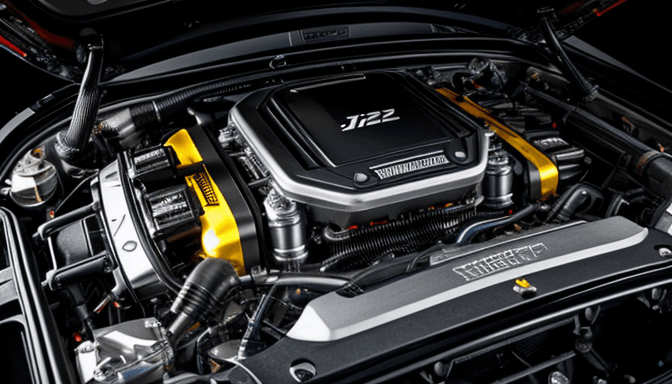
How to Properly Size and Tune a Nitrous Shot for 2JZ Engines
Figuring out the right nitrous shot size for your 2JZ engine isn’t just about grabbing the biggest number you can find. It’s about balance—finding that sweet spot where power gains meet engine safety. Think of your engine like a finely tuned orchestra; every part needs to play its role perfectly to avoid a disastrous performance. Too much nitrous? You risk flooding the engine and causing serious damage. Too little? You’re leaving power on the table.
Start by assessing your engine’s build and supporting mods. A stock 2JZ can usually handle a smaller shot—somewhere around 50 to 75 horsepower—without needing major upgrades. But if you’ve got forged internals, upgraded fuel systems, and a solid ignition setup, you can push that number higher. It’s a bit like seasoning a dish: a pinch of nitrous can enhance flavor, but overdo it and you ruin the meal.
Tuning is where the magic happens. It’s not just about adding nitrous; it’s about making sure your air-fuel ratio stays in a safe zone. Running lean with nitrous is like walking a tightrope without a safety net—one wrong step can cause detonation and catastrophic engine failure. That’s why a proper tune involves adjusting fuel delivery, ignition timing, and sometimes even boost levels to accommodate the extra oxygen and power.
Many enthusiasts swear by using wideband O2 sensors and data logging during tuning sessions. This lets you watch how your engine breathes in real time and make precise adjustments. It’s like having a heart monitor for your engine—crucial for spotting trouble before it hits.
Here’s a quick rundown of key tuning considerations:
- Fuel Enrichment: Increase fuel flow to match the nitrous shot, preventing lean conditions.
- Ignition Timing: Retard timing slightly to reduce the risk of knock.
- Progressive Nitrous Controllers: Use these to gradually introduce nitrous, easing stress on the engine.
- Regular Monitoring: Keep an eye on exhaust gas temperatures and knock sensors.
Remember, tuning nitrous on a 2JZ isn’t a one-and-done deal. It requires patience, testing, and often multiple passes on the dyno or street to find the perfect setup. But when done right, the power gains are thrilling—and your engine stays happy.
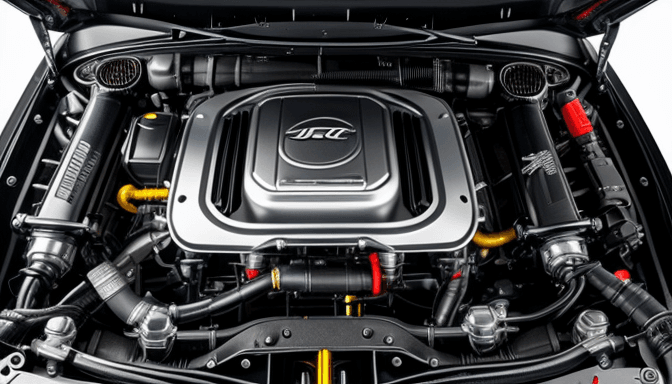
Nitrous for Turbo Spool: How It Helps Big Turbo Setups
Ever felt that frustrating pause just before your turbo kicks in? That lag can make your 2JZ feel sluggish, especially with big turbo setups. Here’s where nitrous oxide steps in like a secret weapon. It’s not just about raw power; it’s about speeding up the spool so your turbo gets going faster, giving you that instant punch you crave. Think of nitrous as a turbo’s best friend, helping it breathe easier and quicker when the boost is slow to build.
Big turbos are great for peak power, but they often suffer from lag because they need more exhaust flow to spin up. Nitrous changes the game by injecting extra oxygen and fuel directly into the combustion chamber, which means the engine can burn more fuel right away. This extra burn helps the exhaust gases spool the turbo faster, cutting down that annoying delay. It’s like giving your turbo a jump start—no more waiting around for the boost to kick in.
But here’s the catch: using nitrous with a turbo requires finesse. You can’t just slam a big shot and hope for the best. Proper tuning is key to avoid lean conditions or detonation, which can wreck your engine. A well-tuned nitrous system works hand in hand with your turbo, improving throttle response without pushing your 2JZ beyond safe limits. It’s about balance, not just brute force.
In real-world terms, drivers often notice a smoother, more immediate power delivery when nitrous assists their turbo. It’s like the difference between waiting for a slow train and catching a bullet train instead. Plus, nitrous can help keep your engine cooler during those critical spool moments, reducing heat soak and maintaining performance.
So, if you’re running a big turbo on your 2JZ and hate waiting for that lag, nitrous could be the missing piece. It’s not just about adding horsepower; it’s about making your setup feel alive and responsive. Just remember: dial it in carefully, respect the tuning process, and your 2JZ will thank you with faster spool and a smile on your face every time you hit the gas.
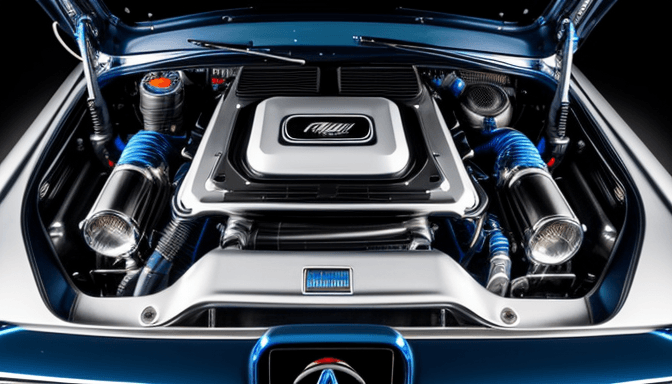
Direct Port vs Single Nozzle: Installation Pros and Cons
When it comes to adding nitrous oxide to your 2JZ, the choice between direct port and single nozzle systems can feel like standing at a fork in the road. Both have their perks, but understanding the nuances can save you headaches and engine troubles down the line. Let’s break it down in a way that’s easy to digest.
Direct port systems spray nitrous and fuel directly into each cylinder’s intake runner. This means the mixture is delivered right where it’s needed, allowing for precise control over the air-fuel ratio. The result? Cleaner combustion and more consistent power gains. However, installing direct port setups is a bit like performing surgery — it requires time, patience, and a keen eye for detail. You’ll be dealing with multiple nozzles, intricate plumbing, and tuning each port just right. But if you’re aiming for maximum power and reliability, this method often pays off.
On the flip side, single nozzle systems shoot the nitrous and fuel into the intake plenum, where it mixes with the incoming air before splitting to each cylinder. Think of it like watering a garden with a single sprinkler versus hand-watering each plant. It’s simpler to install and less expensive, making it a popular choice for beginners or those who want a quick power bump without diving too deep into complex tuning. However, because the mixture isn’t delivered as precisely, you might see less efficient combustion and a slightly higher risk of uneven cylinder performance.
So, what’s the real trade-off? It boils down to your goals and how hands-on you want to be. If you crave precision and are ready to invest time in tuning, direct port systems offer superior control and safety margins. But if you want a straightforward setup that still packs a punch, single nozzle systems get the job done with minimal fuss.
Here’s a quick table to sum it up:
| Aspect | Direct Port | Single Nozzle |
|---|---|---|
| Installation Complexity | High – multiple nozzles and precise placement | Low – single nozzle in intake plenum |
| Fuel & Nitrous Delivery | Individual cylinder control | Mixed before intake manifold |
| Tuning Precision | Excellent | Moderate |
| Cost | Higher | Lower |
| Power Consistency | Very consistent | Less consistent |
| Risk of Lean Conditions | Lower | Higher |
In my experience, a buddy once went with a single nozzle setup on his 2JZ, expecting easy gains. At first, it was smooth sailing, but after pushing the limits, uneven cylinder temps popped up, forcing him to rethink his approach. Switching to a direct port system later gave him the confidence to dial in his tune safely and squeeze out more power without fearing a catastrophic lean condition.
Ultimately, whether you choose direct port or single nozzle, the key is to respect the power you’re unleashing. Both systems can work wonders if installed and tuned properly. Just remember: nitrous oxide isn’t a magic bullet — it’s a tool that demands respect, knowledge, and care.
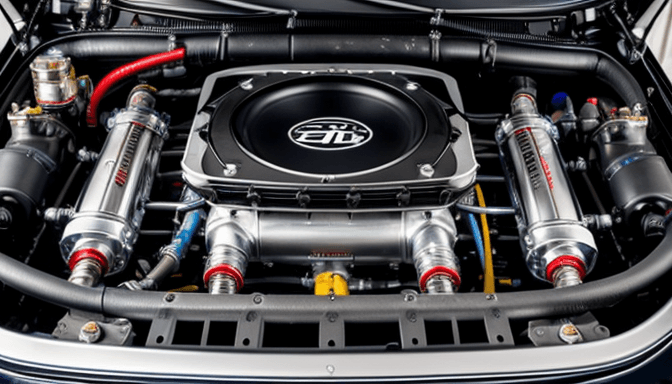
Safety Tips: Preventing Detonation and Lean Conditions
Running nitrous oxide on your 2JZ engine isn’t just about cranking up the power; it’s about doing it smartly. Detonation and lean conditions are like invisible landmines lurking beneath the thrill of extra horsepower. One wrong move, and your engine could pay the price. So how do you dodge these dangers? First off, understand that detonation happens when the air-fuel mixture ignites too early or too violently, causing a knock that can shatter pistons or damage valves. It’s like your engine having a mini explosion inside at the wrong time—definitely not what you want.
Lean conditions, on the other hand, mean your engine is running with too much air and not enough fuel. This imbalance heats things up dangerously, raising the risk of detonation. Think of it as trying to run a marathon on an empty stomach—your engine just won’t perform well and might even break down. The key here is keeping your fuel delivery in check. Upgrading your fuel pump and injectors to match the nitrous shot size is a must. If your engine isn’t getting enough fuel, the nitrous won’t be a friend; it’ll be a foe.
Another crucial safety tip is to always use a high-quality, precise air-fuel ratio (AFR) gauge. Watching your AFR in real-time is like having a lifeline—it tells you exactly how your engine is breathing. If you see the numbers creeping into the lean zone, it’s time to back off or adjust your tune. Speaking of tuning, don’t underestimate the value of a professional or experienced tuner. A proper tune balances ignition timing and fuel delivery to keep detonation at bay. Remember, even a slight timing advance with nitrous can spell disaster if not dialed in correctly.
Also, consider adding a knock sensor or a wideband oxygen sensor to your setup. These sensors act like your engine’s watchdogs, alerting you to early signs of trouble before things get ugly. And never forget the importance of gradual progression. Start with smaller nitrous shots and see how your 2JZ responds. Jumping straight to a big shot without testing is like jumping off a cliff without a parachute—exciting, but reckless.
In short, preventing detonation and lean conditions boils down to balance and vigilance. Fuel upgrades, precise tuning, reliable sensors, and cautious steps all work together to keep your engine safe while you enjoy that thrilling boost. It’s about respecting the power and making sure your 2JZ lives to roar another day.
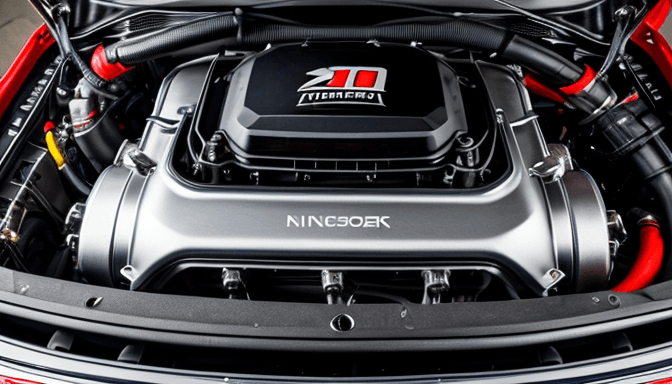
Using Nitrous with Standalone ECU and Boost Control
Running nitrous oxide on a 2JZ engine is thrilling, but it’s not just about slapping on a bottle and hitting the pedal. The secret to a smooth, powerful, and safe nitrous experience lies in how well you integrate it with your engine’s brain—the standalone ECU—and your boost control setup. Think of the ECU as the conductor of an orchestra, making sure every note hits perfectly, especially when nitrous storms the stage.
Standalone ECUs give you the freedom to fine-tune your fuel maps, ignition timing, and nitrous activation points with precision. Without this control, you’re basically flying blind. For example, when nitrous kicks in, the engine demands more fuel to keep air-fuel ratios safe. If the ECU isn’t tuned to handle this, you risk lean conditions that can quickly lead to catastrophic engine damage. It’s like trying to run a marathon without enough water—disaster waiting to happen.
Boost control plays a critical role, too. Nitrous and turbochargers are a dynamic duo, but they need to be balanced carefully. A standalone boost controller lets you dial in how much boost you run when the nitrous is active, preventing spikes that could cause detonation or stress your engine parts. You want a smooth power curve, not a sudden punch that breaks things.
Imagine your ECU and boost controller as partners in a dance. When nitrous is engaged, the ECU adjusts fuel and timing instantly, while the boost controller manages how much pressure hits the cylinders. This teamwork keeps everything running clean and powerful.
Many builders use features like progressive nitrous controllers integrated with their standalone ECUs. These devices ramp up nitrous flow gradually instead of dumping it all at once, giving the engine time to adjust and reducing shock loads. It’s like easing into a cold pool rather than jumping in headfirst—your engine will thank you.
In short, if you want to push your 2JZ with nitrous, relying on a standalone ECU and smart boost control isn’t just a good idea—it’s essential. They’re the difference between a thrilling, controlled power surge and a costly engine failure. So, take the time to tune carefully, listen to what your engine is telling you, and respect the power you’re unleashing.
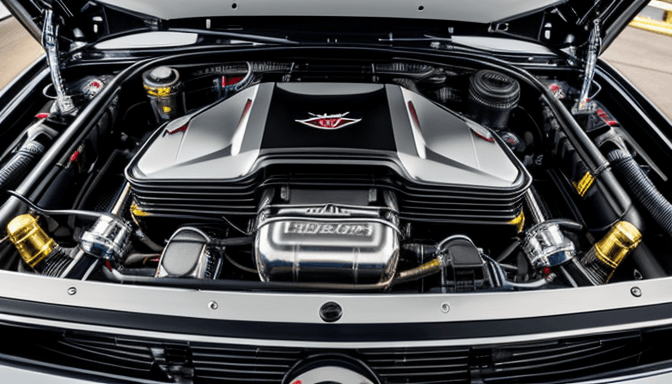
Recommended Supporting Mods for Nitrous Reliability
If you’re thinking about running nitrous oxide on your 2JZ, don’t just slap it on and hope for the best. Nitrous can be a beast, but it demands respect—and that means upgrading your setup to handle the extra power safely. Without the right supporting mods, you’re basically rolling the dice with your engine’s health. It’s like trying to sprint in shoes that are two sizes too small—sure, you can do it, but you’re asking for trouble.
First off, fuel delivery is king. Nitrous dumps extra oxygen into the combustion chamber, so your engine needs more fuel to keep the air-fuel ratio balanced. Stock fuel injectors and pumps often can’t keep up, which leads to lean conditions—a quick path to engine damage. Upgrading to high-flow fuel injectors and a reliable fuel pump isn’t just smart; it’s essential. Think of it as giving your engine the right diet to match its new workout routine.
Ignition timing also plays a crucial role here. Nitrous increases cylinder pressures, which can cause detonation if the timing isn’t dialed in properly. Many tuners recommend retarding timing slightly when spraying nitrous to avoid knocking. An upgraded ignition system, like a stronger coil pack or performance spark plugs, helps ensure a clean, consistent spark. It’s like fine-tuning your orchestra to play perfectly in sync, even when the tempo speeds up.
Cooling can’t be overlooked either. Nitrous oxide actually cools the intake charge, which is great, but the added power creates more heat overall. Upgrading your intercooler, radiator, or even adding an oil cooler can keep temperatures in check. Overheating is a sneaky enemy—it creeps up and wrecks your day before you even realize it.
Lastly, don’t forget about mechanical strength. Depending on your nitrous shot size, stock internals might struggle with the added stress. Forged pistons, stronger rods, and upgraded head gaskets might be necessary for higher horsepower builds. It’s like reinforcing a bridge before driving a heavy truck across—it’s about building trust in your engine’s foundation.
Here’s a quick rundown of key mods to consider for nitrous reliability:
- Fuel System Upgrades: High-flow injectors, fuel pump, and fuel pressure regulator
- Ignition Enhancements: Performance spark plugs, coil packs, and timing control
- Cooling Improvements: Upgraded radiator, intercooler, and oil cooler
- Engine Internals: Forged pistons, rods, and stronger head gaskets for big shots
Running nitrous without these supporting mods is like trying to build a skyscraper on shaky ground. You might get a few floors up, but eventually, it’s going to crumble. Invest in these upgrades, tune carefully, and your 2JZ will thank you with reliable, thrilling power that lasts.
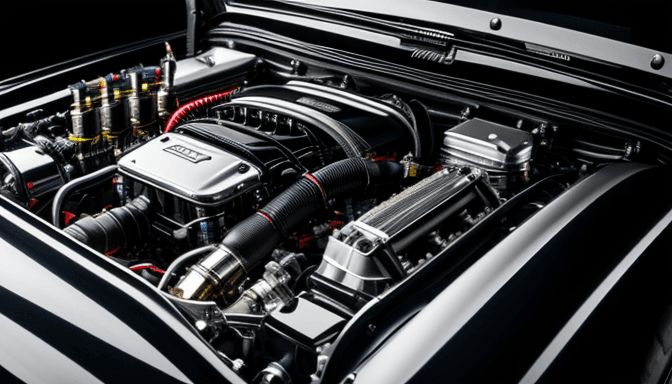
2JZ Builds Successfully Running 50–150 Shot Systems
When it comes to nitrous oxide on the 2JZ, the sweet spot often lies between a 50 and 150 horsepower shot. But what does that really mean in the real world? Well, imagine your 2JZ as a finely tuned athlete. A 50-shot nitrous system is like giving it a strong cup of coffee—enough to perk things up without overwhelming the engine’s natural rhythm. On the other hand, a 150-shot is more like a double espresso with a turbo boost, demanding respect and careful preparation.
Many successful builds in this range share some common threads. First, they don’t just slap nitrous on and hope for the best. Instead, they carefully match the nitrous size to the engine’s supporting mods. For example, a build running a 50-shot might only need minor fuel system upgrades and a solid ignition tune to keep things happy and safe. Meanwhile, those pushing 150 horsepower shots typically invest in stronger fuel pumps, upgraded injectors, and often a standalone ECU to keep the air-fuel ratio in check.
One standout example is a lightly built 2JZ-GTE running a 75-shot nitrous system. The owner focused on a reliable fuel pump upgrade and a custom ignition map, which allowed the engine to breathe and spark efficiently under the extra load. The result? A smooth, predictable power boost that didn’t sacrifice engine longevity. It’s proof that even moderate nitrous shots can transform the driving experience when done right.
On the flip side, more aggressive setups using 125 to 150 horsepower shots often rely on forged internals to handle the extra stress. These builds usually sport upgraded pistons, rods, and head studs to keep everything tight under pressure. Without these reinforcements, the risk of catastrophic engine failure spikes dramatically. So, if you’re eyeing a big shot, remember: the hardware must match the ambition.
Here’s a quick look at typical setups for various shot sizes:
| Shot Size (HP) | Common Supporting Mods | Tuning Focus |
|---|---|---|
| 50–75 | Upgraded fuel pump, larger injectors, basic ignition tune | Maintain safe air-fuel ratio, smooth nitrous delivery |
| 100–125 | High-flow fuel system, forged internals, standalone ECU | Precise ignition timing, boost control integration |
| 150+ | Full forged bottom end, advanced fuel and ignition management, enhanced cooling | Prevent detonation, aggressive timing maps, real-time monitoring |
At the end of the day, the key is respecting the power you’re adding. A 2JZ running a 50 to 150 shot nitrous system can be a beast—but only if it’s built and tuned with care. It’s not about pushing limits blindly; it’s about knowing your engine’s personality and feeding it the right boost at the right time. So, whether you’re cruising the street or tearing up the strip, a well-executed nitrous setup can bring a thrilling edge—without the nightmare of blown pistons.
Frequently Asked Questions
- What exactly does nitrous oxide do to the 2JZ engine?Think of nitrous oxide as a turbocharger’s wild cousin. When injected into the 2JZ’s combustion chamber, it releases extra oxygen, allowing more fuel to burn. This chemical boost cranks up horsepower and torque almost instantly, giving your engine that thrilling kick without needing a bigger turbo or engine swap.
- Should I go with a wet or dry nitrous system for my 2JZ?It’s like choosing between a smoothie or a shot of espresso—both get you energized, but in different ways. Wet systems mix fuel and nitrous together before entering the engine, offering cooler combustion and safer tuning, while dry systems add just nitrous and rely on your fuel system to compensate. For beginners or those prioritizing safety, wet systems are usually the smarter bet.
- How do I pick the right nitrous shot size without blowing up my engine?It’s tempting to jump straight to a massive shot, but slow and steady wins the race. Start with a smaller shot—say 50 horsepower—and tune your air-fuel ratios carefully. Using a wideband O2 sensor and conservative timing adjustments helps keep your 2JZ happy and healthy. Remember, nitrous is a power amplifier, so your base tune must be solid first.
- Can nitrous help reduce turbo lag on big turbo 2JZ setups?Absolutely! Nitrous acts like a secret weapon against that annoying turbo spool delay. By injecting extra oxygen and fuel, it helps the turbo spool faster, giving you quicker throttle response and less waiting around for power to kick in. It’s like having a turbocharger on turbocharge!
- Direct port or single nozzle nitrous system—which one should I install?Direct port systems spray nitrous right at each cylinder, offering pinpoint accuracy and better atomization, but they’re more complex and pricier. Single nozzle systems are simpler and easier to install but might not deliver as even a spray pattern. Your choice depends on your budget, skill level, and how serious you are about tuning precision.
- What are the key safety tips to avoid engine damage when using nitrous on a 2JZ?Safety isn’t just a buzzword—it’s your engine’s lifeline. Always maintain proper air-fuel ratios to avoid lean conditions, retard ignition timing to prevent detonation, and ensure your fuel system can keep up. Installing a fuel pressure safety switch and regularly monitoring engine temps can save you from costly repairs.
- Can I use nitrous with a standalone ECU and boost control?Yes, and it’s actually a game-changer. Integrating nitrous with a standalone ECU lets you precisely control when and how much nitrous is injected, syncing it with boost levels and engine conditions. This smart tuning approach maximizes power while minimizing risks, turning your 2JZ into a finely tuned beast.
- What supporting mods should I consider for running nitrous reliably on my 2JZ?Think of nitrous as a power party crasher—it demands the right setup to keep things smooth. Upgrading your fuel pump, injectors, and ignition system ensures your engine gets the fuel and spark it needs. Don’t forget cooling upgrades like an intercooler or radiator enhancements to keep temps in check and avoid overheating.
- Are there real-world examples of 2JZ engines running 50–150 horsepower nitrous shots?Definitely! Many enthusiasts have successfully run nitrous shots in this range, balancing power gains with reliability. These builds often feature upgraded fuel systems, precise tuning, and robust engine internals. They prove that with the right preparation, nitrous can be a dependable way to add serious grunt to your 2JZ.